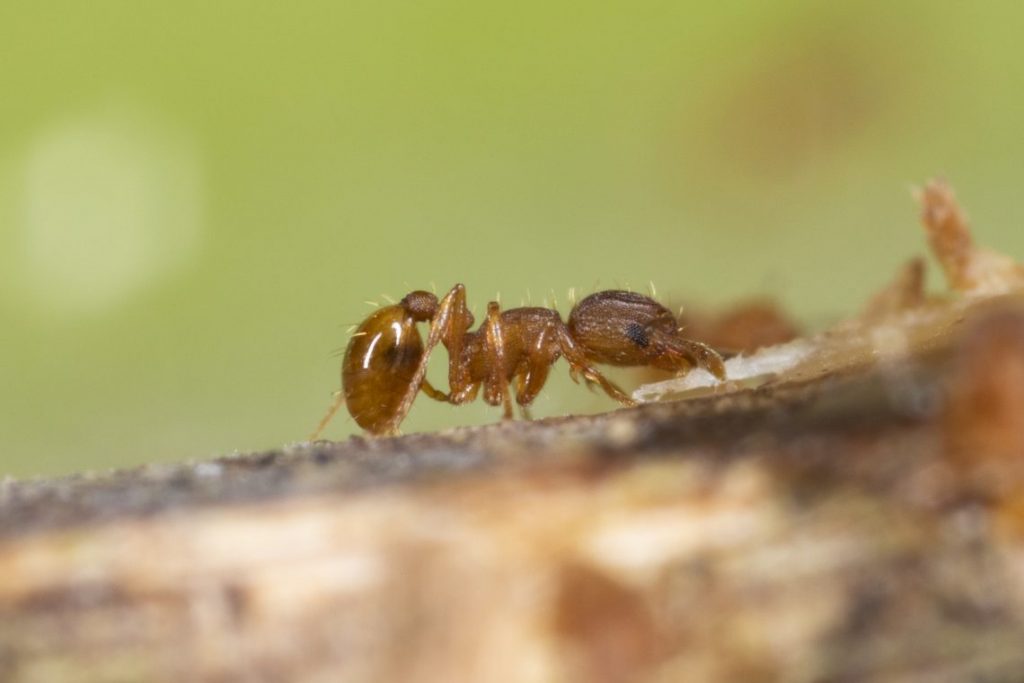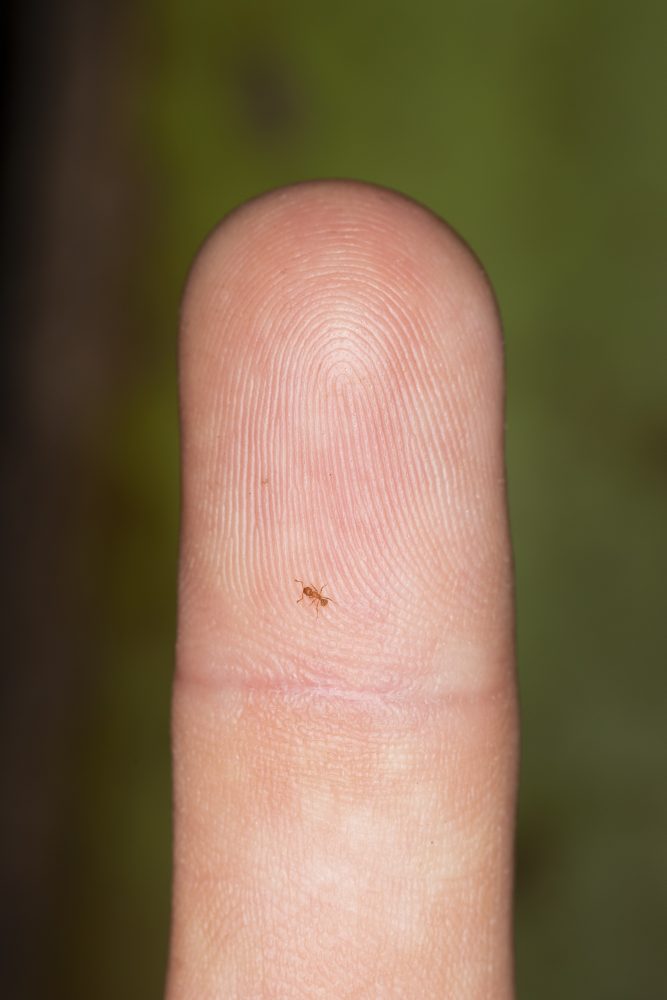PRESS RELEASE
Date: June 3, 2021 FOR IMMEDIATE RELEASE
Subject: New invasive little fire ant population discovered in Huelo
Contact: Serena Fukushima, Public Relations and Educational Specialist
Maui Invasive Species Committee
PH: (808) 344-2756
Email: miscpr@hawaii.edu
In early May, the Maui Invasive Species Committee (MISC) received a voicemail from a husband and wife describing stinging ants encountered on the property where they live in Huelo. They explained that tenants on the property doing yardwork experienced stings on their torsos by tiny ants. MISC and the Hawaiʻi Department of Agriculture surveyed the property and positively identified little fire ants (LFA). The MISC little fire ant team thoroughly mapped the infestation and treatments have already begun. MISC is working with the landowner and tenants on determining where the source of this new little fire ant infestation came from. Despite the proximity of this site to another infestation in Huelo, these sites do not appear to be related.

Photo: MISC File Photo
“If the community continues to be our eyes and ears by reporting suspect ants, we can stop the little fire ant from becoming established on Maui,” says Adam Radford, Manager of the Maui Invasive Species Committee. “reporting is critical to finding these invasive ant populations and eliminating them, so getting into the habit of contacting MISC when you get stung by a suspect ant is a great way to protect our island from these invasive species. If you get a sting, give us a ring!”
Community efforts have led to the detection of 12 of 18 known infestations of little fire ants on Maui. Once detected, each infestation is treated for approximately one year, then monitored. There are only six sites, including this one, where little ants are still present and under active control.
On Maui, funding from the County of Maui and the Hawaii Invasive Species Council supports little fire ant control efforts. The Hawaii Department of Agriculture inspects incoming plant material for invasive pests, preventing additional infestations, and assists MISC with survey and control efforts.
Little fire ants have become widespread on Hawaii Island. Animals often leave the areas where ants are established, as do hikers, farmers, and hunters. When little fire ants invade yards and homes, pets can be blinded, and residents choose to move.

Photo: Z.Pezzillo 
Photo: Z.Pezzillo
Community efforts are essential to keeping invasive ants from becoming widespread. MISC recommends collecting ants in your yard for identification at least once per year, and every time new materials such as mulch or nursery plants are purchased. It only takes a few minutes to test for LFA:
Smear a tiny bit of peanut butter (or mayonnaise if peanut allergies are a concern) on several thin strips of cardboard, and place them in shady places in your yard. After 45 minutes, collect the samples with ants, place them in a plastic bag labeled with your name, address, and contact information, and freeze for 24 hours to kill the ants. Mail them to your local Invasive Species Committee. On Maui, please send them to MISC, P.O. Box 983, Makawao, HI 96768.
Visit stoptheant.org to find out more information on collecting ant samples and the status of LFA on Maui and throughout the state. Contact MISC with concerns, questions, or reports at 808-573-6472 or miscants@hawaii.edu. Reports can also be submitted through 643PEST.org.

